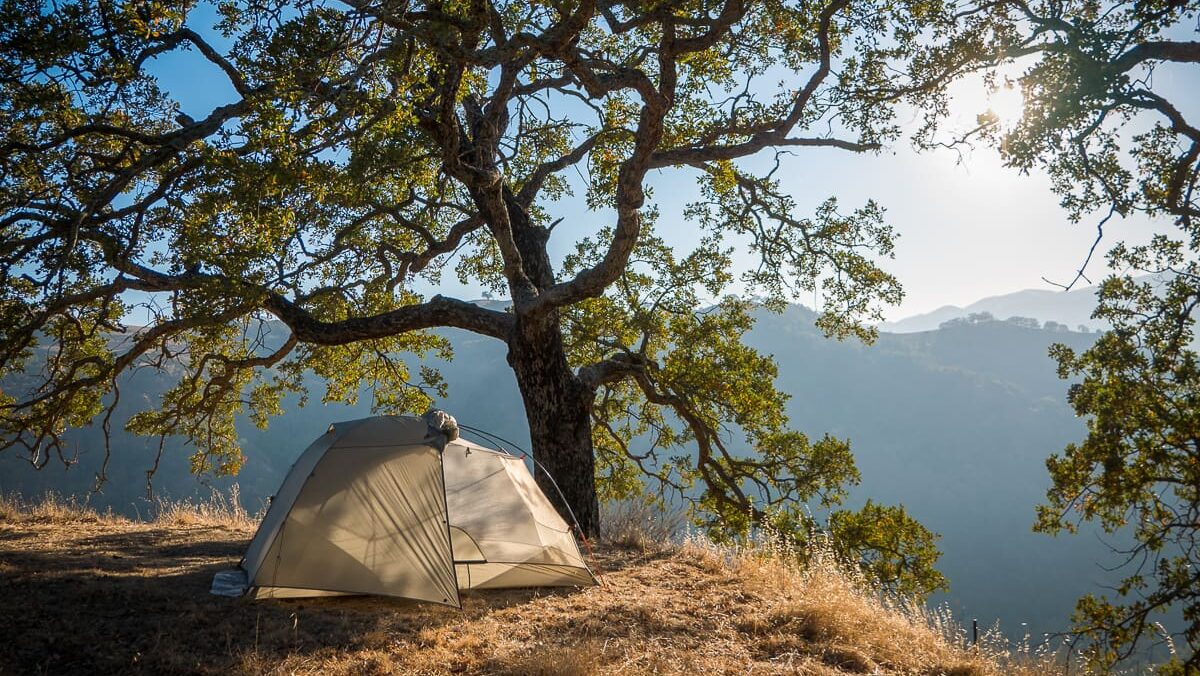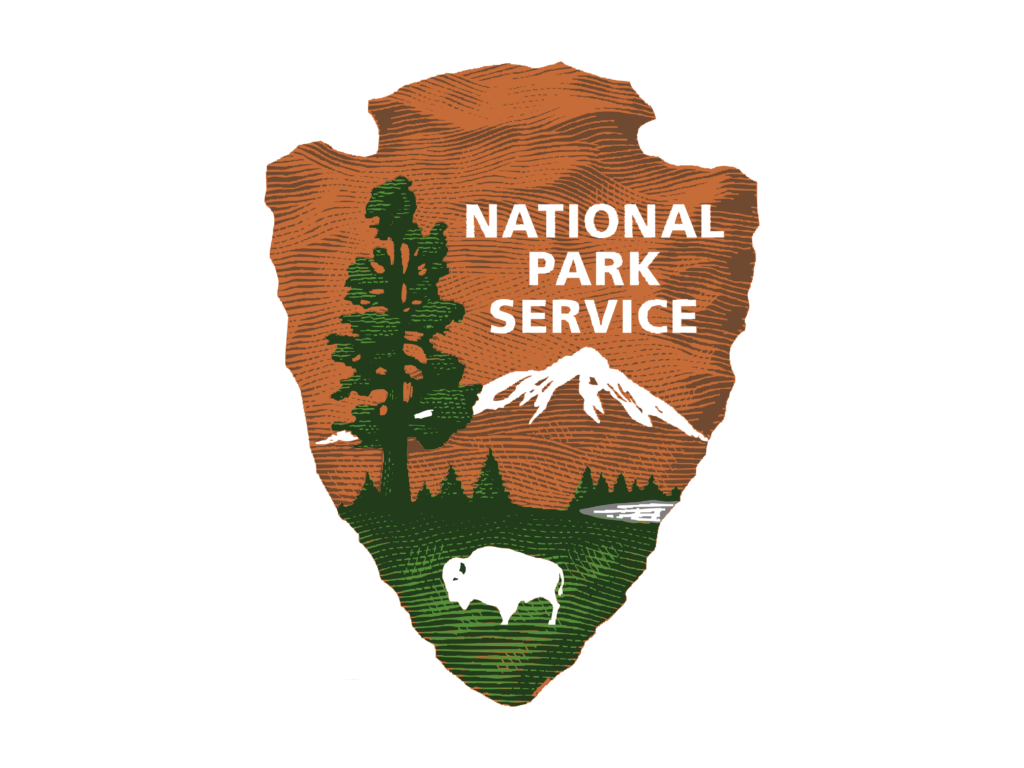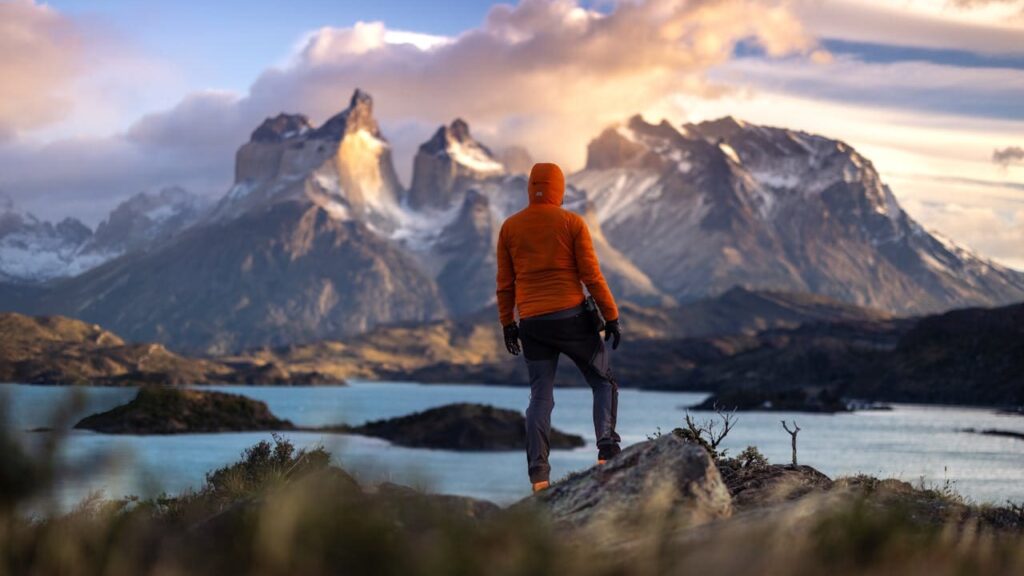Best Backpacking Trails Near Me: How to Find the Perfect Route

Nothing ruins a backpacking trip faster than choosing the wrong trail. You set out expecting stunning views and peaceful campsites, only to find an overgrown path, unreliable water sources, or an overcrowded campground.
Finding the perfect backpacking trails near you isn’t as simple as picking the top-rated hike on AllTrails. The best backpacking routes require research—from trail conditions and permits to elevation gain and camping availability.
Picking the right trail is important—but having a solid plan is just as crucial. Check out my guide on Planning Your First Backpacking Trip to make sure you’re fully prepared for the journey ahead!
In this guide, I’ll walk you through everything you need to know about choosing the right backpacking trail. Whether you’re looking for overnight backpacking trails near me, backpack camping near me, or a remote multi-day adventure, these tips will help you find the perfect route.
👉 Prefer to watch instead? Check out my full YouTube breakdown here.
Disclosure: This post contains affiliate links. As an Amazon Associate, I earn from qualifying purchases. I only recommend products I use and trust.
Why Choosing the Right Trail Matters
Importance of Matching a Trail to Your Experience Level
A trail that looks amazing in photos might be far too difficult—or not challenging enough—depending on your skill level. The right trail should match your experience for both safety and enjoyment.
- Beginners: Stick to well-marked, moderate trails (5-10 miles round-trip) with reliable water sources and established campsites.
- Intermediate Backpackers: Consider longer routes with steeper climbs or dispersed camping options.
- Advanced Backpackers: Take on off-trail navigation, rugged terrain, or multi-day treks requiring full self-sufficiency.
Trail ratings can be misleading. A “moderate” hike might feel extreme if it includes 2,500+ feet of elevation gain or technical sections like river crossings. Always compare the difficulty to hikes you’ve already done.
Common Mistakes People Make When Picking a Trail
Even experienced hikers choose the wrong trail. Avoid these common mistakes:
- Relying Only on AllTrails Reviews – Some “backpacking trails” lack good campsites or reliable water. Elevation profiles can also be misleading.
👉 One of the biggest beginner mistakes is trusting a single source when picking a trail. Learn how to avoid other pitfalls in Beginner Backpacking Mistakes. - Not Checking Recent Trail Conditions – A well-reviewed trail last season may be washed out, overgrown, or closed due to wildfires or flooding. Check Gaia GPS, The Dyrt, or local ranger updates before heading out.
- Ignoring Seasonal & Environmental Factors – Spring snowmelt can block trails, and desert heat can make summer hiking dangerous. Water sources that were flowing in May may be dry by August.
- Underestimating the Mental & Physical Challenge – A long, flat trail with repetitive scenery can be just as exhausting as a steep climb. Check firsthand trip reports from hikers with similar experience levels.
👉 Bottom Line: A great trip starts with the right trail. Cross-check multiple sources, research elevation profiles, and factor in seasonal changes before making your choice.
Key Factors to Consider When Picking a Trail
Choosing the right trail involves more than just picking a scenic route. Distance, elevation gain, terrain, and camping options all play a major role in how enjoyable—or difficult—your trip will be. Even experienced backpackers can misjudge a route if they don’t evaluate these factors carefully.
Distance & Duration – Single Overnight vs. Multi-Day Treks

Before committing to a trail, consider how long you’ll be out and how much ground you can realistically cover.
- Overnight trips (5-10 miles total): Great for beginners or short weekend getaways.
- 2-3 night trips (10-30 miles total): Ideal for those looking to explore more remote areas.
- Extended treks (30+ miles): Require careful planning for water, food, and resupplies.
Mileage alone doesn’t tell the whole story. A 25-mile route may sound manageable over three days, but if the terrain is steep or water sources are unreliable, it can become far more challenging than expected.
Elevation Gain & Difficulty – Why Mileage Alone Isn’t Enough
A 10-mile hike with significant elevation gain is much harder than a flat 10-mile walk. Before choosing a route, check:
- Elevation Profile: A 3,000-foot climb over 10 miles is manageable, but the same gain in just 3 miles is brutal.
- Trail Conditions: Steep, rocky, or loose terrain can slow you down.
- Weather Impact: A moderate hike in cool weather may feel extreme in high heat or wind.
👉 Tip: If a past hike with 2,000 feet of gain felt tough, a 3,500-foot climb with a full pack may not be the best choice.
Terrain & Scenery – Mountains, Forests, Rivers, and Lakes

Your environment affects everything—your pace, gear, and overall experience.
- Mountain trails provide stunning views but often involve high elevation and exposure.
- Forest trails offer shade but may have dense vegetation and fewer views.
- Water-adjacent routes make resupply easier but can attract bugs, mud, and overgrowth.
If solitude is your priority, avoid heavily trafficked areas where designated campsites fill up quickly.
Camping Options – Designated vs. Dispersed Camping
Where you camp impacts your overall experience. Some trails have designated campsites with tent pads and fire rings, making planning easier—but these can get crowded.

For more solitude, dispersed camping lets you set up camp wherever it’s permitted. National Forests and BLM lands offer more flexibility but require more self-sufficiency, including carrying extra water and following Leave No Trace principles.
👉 Planning a dispersed camping trip? Check out my Backpacking Gear Lists to ensure you’re fully prepared.
Where to Find the Best Backpacking Trails Near You
Finding the perfect backpacking trails near me isn’t a guessing game. With the right resources, you can discover routes that match your skill level, trip length, and terrain preference. While AllTrails is a great starting point, relying on a single source can lead to misleading trail ratings, outdated water availability, or permit oversights. Using a mix of trail apps, local groups, and official park resources will give you the most accurate picture.
Best Online Trail Resources: AllTrails, Gaia GPS, onX Backcountry
Trail apps provide maps, reviews, and GPS navigation, helping you research and plan:

- AllTrails – Great for browsing trails, but confirm details elsewhere—some “backpacking routes” lack water sources or legal camping.
- Gaia GPS – Excellent for topographic maps, elevation tracking, and offline navigation.
- onX Backcountry – Useful for finding dispersed camping areas and understanding public land boundaries.
Cross-referencing multiple platforms ensures you pick a route that fits your trip goals and current conditions.
Local Hiking Groups & Forums: Reddit, Facebook, Hiking Project
Local hikers often share firsthand reports, hidden gems, and real-time trail conditions that apps miss.
- Reddit – Subreddits like r/backpacking and r/hiking provide personal trail reviews and backcountry tips.
- Facebook Groups – Many regional backpacking groups share up-to-date trip reports and permit reminders.
- Hiking Project – A crowd-sourced trail database with detailed descriptions, GPS tracks, and elevation profiles.
A quick post in these communities can help you find quieter trails and avoid surprises.
National & State Park Websites: Official Trail & Permit Info
For accurate maps, permit requirements, and regulations, check:
- National Park Service (NPS) – Official details for U.S. national parks, including permit applications, campsite rules, and seasonal updates.
- State Park Websites – Often highlight less crowded alternatives to national parks with lower permit demand.
Most of these websites also offer downloadable PDF maps for offline navigation.


Guidebooks & Trip Reports: Hidden Insights
Printed guidebooks and backpacking blogs can offer deeper insight than trail apps alone.
- Regional Backpacking Books – Titles like Backpacking Washington or Backpacking California feature proven routes with detailed itineraries.
- Backpacking Blogs & Trip Reports – Experienced hikers share firsthand insights on trail difficulty, water availability, and unexpected challenges.
👉 Need more help planning your trip? Check out Planning Your First Backpacking Trip to avoid common mistakes and get a solid game plan in place.
Hidden Gems – How to Find Lesser-Known Trails
Popular backpacking trails can get crowded, especially in national parks. If you’re looking for solitude, you’ll need to go beyond mainstream trail lists. By using satellite imagery, national forests, and local recommendations, you can find incredible hidden routes that most hikers overlook.
Using Satellite Imagery & Topographic Maps
Satellite tools help you discover routes not listed on traditional hiking apps.
- Google Earth reveals ridges, valleys, and alpine lakes that might not appear on standard trail maps.
- Gaia GPS and USGS Topo Maps show abandoned trails, off-trail routes, and potential water sources.
A little map research can lead to some of the most rewarding, lesser-traveled trips.
Exploring National Forests & BLM Land

National forests and Bureau of Land Management (BLM) areas provide more freedom for dispersed camping compared to national parks. Many of these regions allow you to camp anywhere, offering a more remote experience.
To find hidden trails, check:
- USDA Forest Service for dispersed camping maps.
- Local ranger stations for under-the-radar routes that aren’t widely documented.
If you’re comfortable with off-trail navigation, national forests offer some of the best secluded backpacking opportunities.
Getting Local Recommendations
Some of the best routes are never shared online but are well-known to local experts.
- Park Rangers can suggest less crowded alternatives to popular trails.
- Outdoor Retailers often have staff who backpack regularly and know hidden gems.
- Backpacking Clubs & Forums (Facebook, Reddit, local hiking groups) provide firsthand accounts of off-the-grid trips.
👉 Before heading into remote terrain, make sure you’re prepared. Check out What I Wish I Knew Before My First Backpacking Trip for expert tips on gear, planning, and safety.
Checking Trail Conditions Before You Commit
A trail that looked perfect last season might be impassable today due to wildfires, flooding, or unexpected closures. Seasonal changes, recent weather events, and permit requirements can drastically affect your trip. Checking conditions ahead of time ensures you won’t face surprises like dry water sources or blocked routes.
Seasonal Changes – Snow, Heat, and Wildfire Risk

Trail conditions shift with the seasons, making timing crucial:
- High-altitude trails may hold snow into early summer, requiring microspikes or route adjustments.
- Desert trails can be comfortable in spring but dangerously hot and dry by mid-summer.
- Wildfire season (summer–fall) can lead to trail closures, poor air quality, and campfire bans.
Check NOAA Weather and Mountain Forecast for real-time updates before heading out.
Recent Trail Reports & Ranger Updates
Even open trails can have washed-out sections, fallen trees, or unreliable water sources. Before committing to a trail:
- Check trip reports on The Dyrt and Gaia GPS for recent hiker experiences.
- Browse Reddit and Facebook Groups for real-time water availability and campsite conditions.
- Call the local ranger station for the most up-to-date info on closures, fire restrictions, and wildlife advisories.
Permit Requirements – Do You Need One?
Many popular backpacking trails require permits, and some book out months in advance:
- National Parks: Limited backcountry permits for high-demand trails like Yosemite or The Enchantments.
- First-Come, First-Serve: Some areas allow walk-up permits, but they can be highly competitive.
- Wilderness Areas: National forests and BLM lands often don’t require permits, making them great alternatives.
👉 Need help planning your first multi-day trek? Check out Planning Your First Backpacking Trip for expert tips.
Final Checklist Before Hitting the Trail
Once you’ve picked your trail and checked conditions, it’s time for a final prep check. A well-prepared backpacker is ready for unexpected challenges—whether it’s a dry water source, a surprise storm, or a missing permit. Before heading out, run through this checklist to avoid last-minute problems.
Confirm Water Sources & Resupply Points
Water availability can make or break a trip, especially in dry or high-altitude regions. Even if maps show lakes and streams, seasonal changes can affect their flow.
- Check recent trip reports for up-to-date water availability.
- Plan your carries—some sections may require hauling extra liters.
- Bring a water filter like the Sawyer Squeeze or Katadyn BeFree [on Amazon].
- Know your resupply points—some trails pass through towns or ranger stations where you can refill bottles.
Pack the Right Gear for the Terrain

Your gear should match trail conditions, elevation, and weather.
- Cold nights? A warm sleeping bag and insulated pad are essential [links via Amazon].
- Rocky trails or river crossings? Trekking poles and camp shoes improve stability [links via Amazon].
- Exposed terrain? Rain gear, sun protection, and extra layers are a must [links va Amazon].
👉 Need help packing? Check out these Backpacking Gear Lists for trip-specific recommendations.
Follow Food Storage & Safety Rules
Food storage regulations vary by location—some areas require bear canisters, while others allow bear hangs.
- Bear Country: Use bear-proof containers like the BV500 [on Amazon].
- Rodents & Small Critters: Protect food with an odor-proof sack [on Amazon].
- Fire Restrictions: Many areas ban fires—bring a lightweight stove instead [on Amazon].
Check local regulations to avoid fines and keep wildlife safe.
Final Trail Readiness Check
Before stepping onto the trail, ask yourself:
✔ Do you have your permits and maps? Some trails require printed copies.
✔ Is your emergency contact aware of your itinerary? Share your expected return time.
✔ Is your gear fully packed and functional? Set up your tent and test your stove before leaving.
✔ Do you have navigation tools? A map, compass, and GPS tracks can prevent getting lost [links via Amazon].
A few minutes of preparation can make the difference between a smooth trip and a preventable mistake.
Closing Thoughts
Choosing the right backpacking trail is more than just finding a scenic route—it’s about matching the trail to your skill level, understanding terrain challenges, and planning for the conditions you’ll face. Taking the time to research trail reports, check permits, and prepare your gear can mean the difference between a smooth, enjoyable trip and an exhausting struggle.

By using the right resources, exploring lesser-known trails, and running through a final checklist before you go, you’ll set yourself up for a successful adventure. Whether you’re heading out for an overnight trip or a multi-day trek, proper planning ensures that you spend less time worrying and more time enjoying the experience.
👉 Before you go, make sure you have everything you need! Download our Beginner Backpacking Gear Checklist to help you pack like a pro. And wherever your next adventure takes you—make it a good one.
Join Our Community of Adventure Seekers!
Get the latest backpacking tips, gear guides, and trail inspiration sent directly to your inbox.
Sign up to start exploring!
Amazon and the Amazon logo are trademarks of Amazon.com, Inc. or its affiliates.

